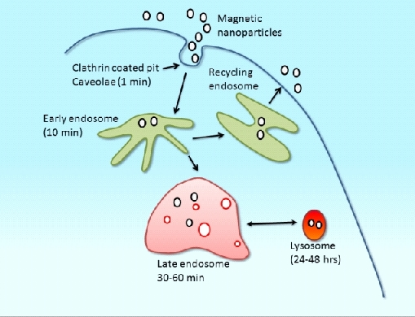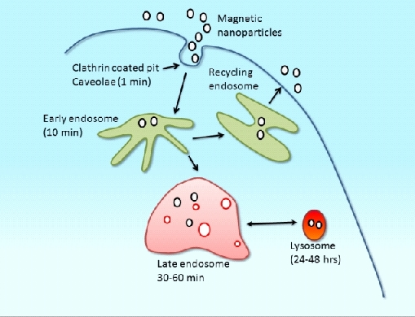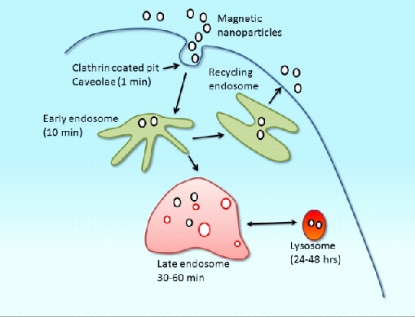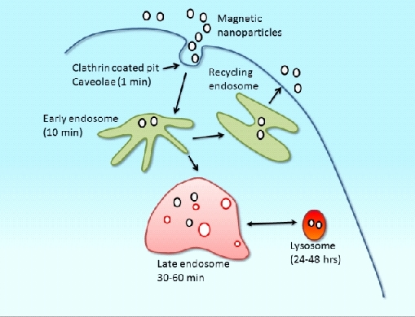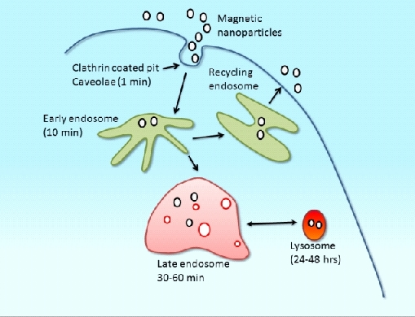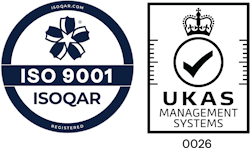DexoMAG®
DexoMAG® is dextran coated magnetite which can be used to separate subcellular compartments along the endocytotic system.
- We offer three particles which can be used to separate lysosomes.
- The lysosomes are still functional after separation as DexoMAG® causes no adverse reactions in the cells and allows multiple assays to be performed on a single sample.
- Using a pulse-chase experiment, DexoMAG®nanoparticles are internalised into the cell by the endocytotic system and finish in the lysosome.
- The lysosome can be extracted using high gradient magnetic separation (HGMS).
- Using enzyme assays it has been determined that the lysosome fraction is pure and not contaminated with other sub-cellular fractions.
- DexoMAG® is non-toxic to lysosomes as they retain their function after separation.
- Fe conc. 10mg/ml.
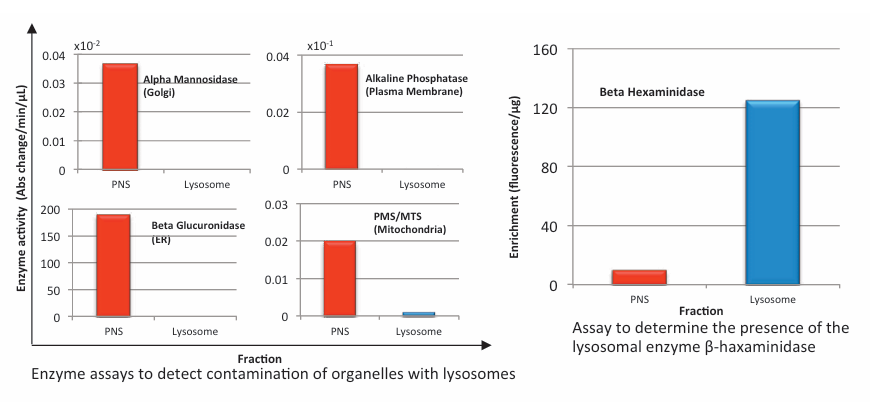 Enzyme assays to detect contanmination of organelles with lysosomes
Enzyme assays to detect contanmination of organelles with lysosomes

Products available
| Product | Dextran (kDa) |
Core size (mm) |
Hydrodynamic size (nm) |
ζ-potential (mV) |
Fe (mg/ml) |
Solvent |
|---|---|---|---|---|---|---|
| DexoMAG®40 | 40 | 8.0 | 50 | 0 | 10 | dH2O |
| DexoMAG®10 | 10 | 8.0 | 40 | 0 | 10 | dH2O |
| DexoMAG®3.5 | 3.5 | 8.0 | 35 | 0 | 10 | dH2O |
Using dextran coated nanoparticles for separation of sub-cellular organelles does not affect the shape, structure or performance of the organelle. Testing for superoxides, Lipid peroxidation and reactive oxygen species show very little difference between untreated cells and those treated with DexoMAG ® 40 (CHO-H1 cell line).
Customised materials are available with varying molecular weights, concentrations and coatings. Fluorescent tags on the particles are now available.
We are happy to accept speculative enquiries about the range of materials and expertise available in our company.

